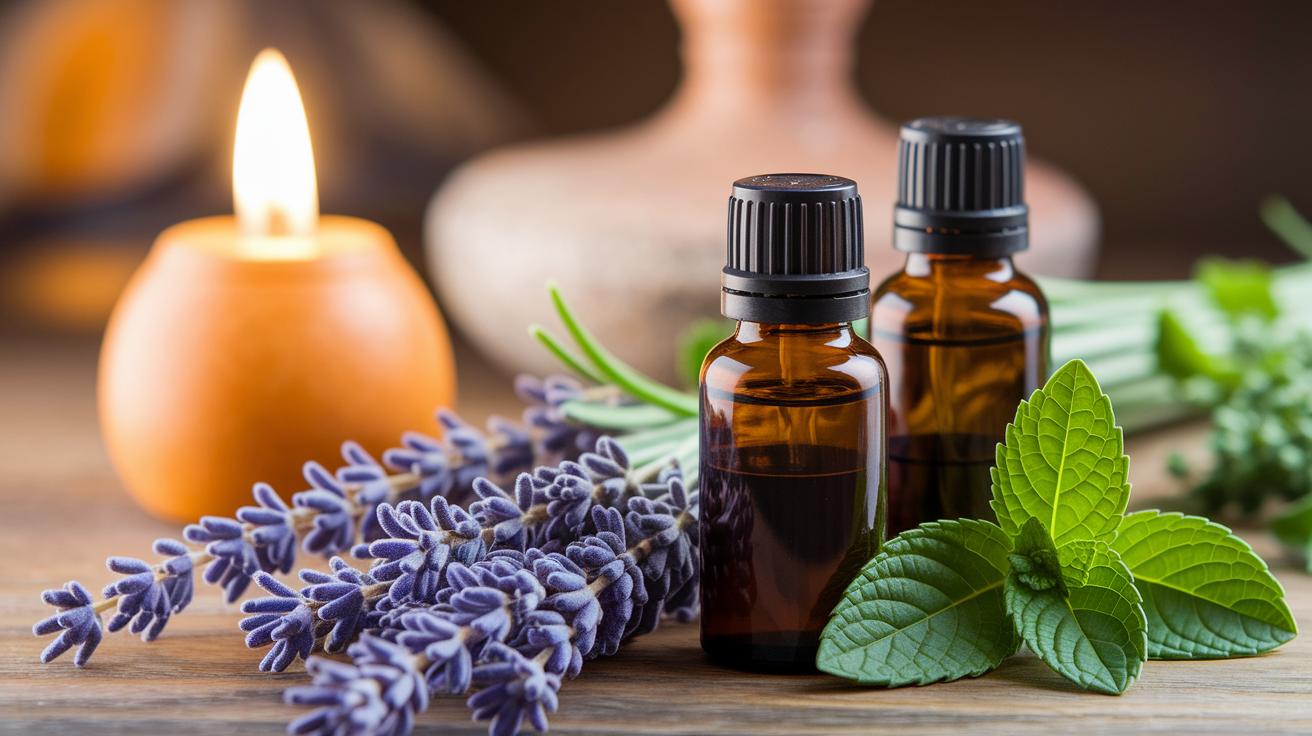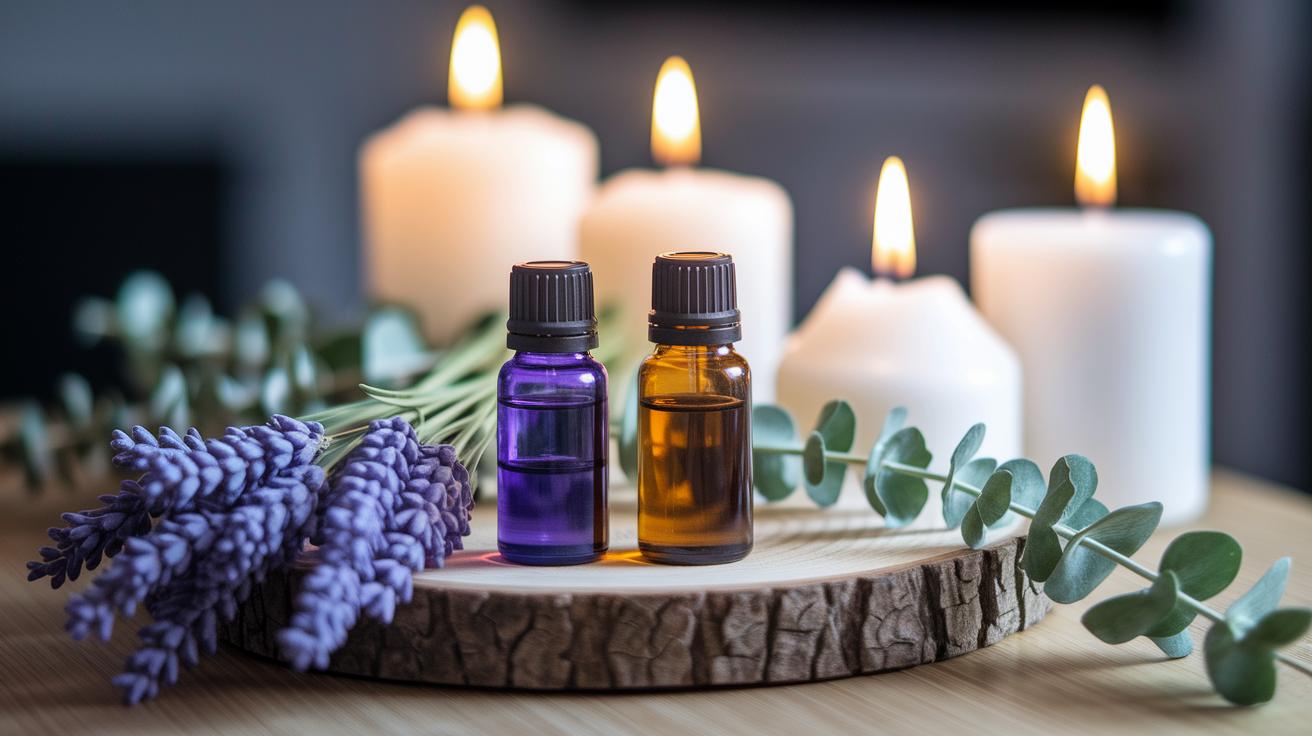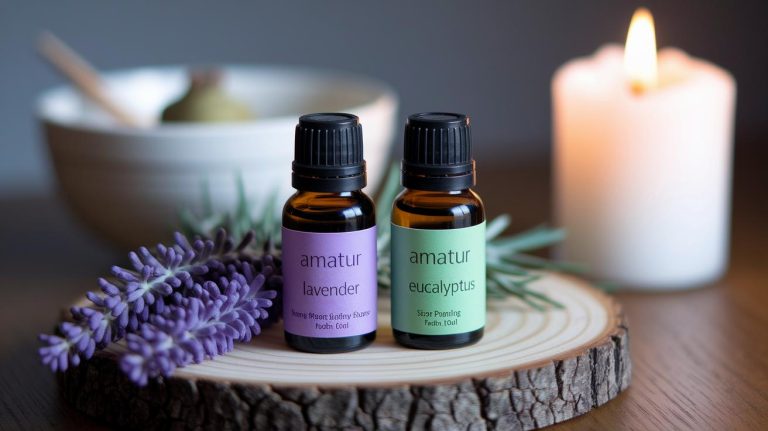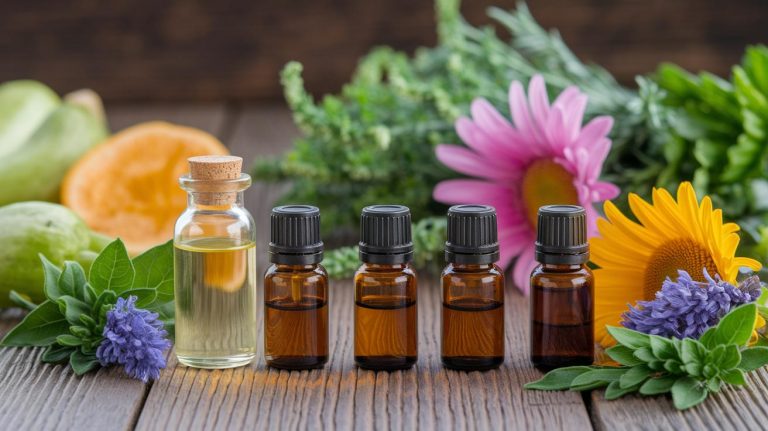Aromatherapy Beginner Guide Calms Your Mind
Can a single drop of lavender really slow down a racing mind? Have you ever noticed how one slow breath of lavender can settle a whirlwind of thoughts? Um, it’s kinda magical.
More people are swapping pills for a plant-based mist. You don’t need a prescription to invite calm into your day.
In this guide, we’ll explain how essential oils (concentrated plant extracts) speak straight to your nerves. I’ll drop in quick safety tips so you feel confident with every drop. Then I’ll share five easy ways to weave pure aroma into your daily routine.
From mist baths to skin rubs, each mini ritual offers a moment of calm during your busiest hours. No fancy gear needed. Just pick your favorite oil and use a diffuser (device that turns oil into a fine mist).
Ready to find your calm? Let’s get started.
Aromatherapy Beginner Guide: Fundamentals and Benefits

Aromatherapy is more than a nice smell. It taps into essential oils (concentrated plant extracts from flowers, bark, stems or leaves) for natural support. Think of each drop as a silent waterfall of pure aroma. You get a subtle ripple of calm or a touch of brightness.
True essential oils aren’t the same as perfume. Fragrance oils usually mix synthetic scents in carriers like alcohol or water. Pure essential oils deliver plant chemistry without fillers, so every mist and massage feels just like nature intended.
When you inhale lavender or peppermint, your olfactory nerves send signals to the limbic system (the part of your brain that handles memory and emotion). One gentle breath can ease tension, spark clarity or soothe an anxious mind. And on your skin, aroma molecules meet nerve endings to softly lift your mood. Aromatherapy touches both body and heart.
Start simple with three oils that welcome beginners:
- Lavender oil: soft, floral aroma that invites rest and eases mild tension.
- Peppermint oil: bright, minty aroma that sharpens focus and soothes headaches.
- Tea tree oil: clean, medicinal aroma known for skin support and immune balance.
These core oils bring a gentle hello to essential oils and set the stage for deeper exploration. Ready to give them a try?
Aromatherapy Beginner Guide: Choosing Quality Essential Oils
Have you ever noticed how one drop of lavender can feel like a gentle breeze while another smells flat? At Organic Aromas, we know not all essential oils share the same purity. Always look for labels that list the botanical name (Latin name) right next to the common name. And check where the plant came from. It makes all the difference.
You might see Pimenta racemosa (West Indian bay leaf) instead of Laurus nobilis (Mediterranean bay leaf). That little detail tells you exactly which bay oil you’re getting.
Here’s what to watch for on a trustworthy label:
- Botanical name (Latin name) next to the common name
- Country of origin and harvest date
- Third-party purity tests like GC/MS (gas chromatography/mass spectrometry tests)
- Notes on organic (grown without synthetic pesticides), wild-crafted (gathered from wild plants) or ethically farmed (grown with fair labor) methods
Avoid oils sold at street fairs, craft shows or pop-up markets. They rarely come with guarantees. And um cheap prices often mean cut or mixed oils.
Store your oils in dark glass bottles – amber or cobalt blue – tucked away in a cool, dark cabinet. Rubber dropper tops can break down and contaminate your oils over time. We like bottles with plastic orifice reducers (sometimes called euro droppers) because they protect every precious drop.
Ordering from respected mail-order suppliers usually means you get higher quality at better prices than generic local shops. A little research up front helps you sniff out sneaky adulteration.
Trust your nose.
Aromatherapy Beginner Guide: Devices and Application Methods
Ultrasonic, Nebulizing, and Heat-Based Diffusers
Think of a diffuser as a silent waterfall of pure scent. Ultrasonic diffusers (devices that use high-frequency vibration to blend oil and water into a fine mist) send a soft mist rippling through your room. Nebulizing diffusers (devices that atomize pure oil into tiny particles without water) give you nothing but oil magic. One popular choice is the Raindrop® Portable Nebulizing Essential Oil Diffuser (https://organicaromas.com/?p=65229). Heat-based diffusers (devices that use gentle warmth to lift aroma from oil) feel like a sun-warmed stone releasing its scent.
Next, here’s a simple comparison to guide your choice:
| Diffuser Type | How It Works | Drops & Settings |
|---|---|---|
| Ultrasonic | High-frequency mist of oil and water | 3–5 drops plus 100 ml water; run 10–20 minutes |
| Nebulizing | Pure oil atomized into fine particles | 20–40 drops; cycle 1 min on, 2 min off |
| Heat-Based | Light warmth releases fragrance | 4–6 drops; up to 30 minutes |
Ultrasonic models add a bit of humidity and are easy on your budget. Nebulizing diffusers deliver the richest aroma, learn more in How Does a Nebulizing Diffuser Work (https://organicaromas.com/?p=65350). Heat-based options are simple to use but can gently alter an oil’s scent profile. Try different settings and take breaks so each mist feels fresh.
Topical, Steam, Bath, and Inhalation Uses
Oils can follow you beyond your diffuser. Here are a few ways to keep calm close by:
Topical application
- Mix 12–18 drops of essential oil in one ounce of jojoba or coconut carrier oil (about 2 percent).
- Apply to pulse points, wrists, temples or the back of your neck for a quick lift.
Steam inhalation
- Pour hot water into a bowl and add 2–3 drops of eucalyptus or peppermint oil.
- Lean over, cover your head with a towel and breathe slowly for 5–10 minutes.
Bath infusion
- Stir 5–7 drops of oil into one teaspoon of carrier oil or bath salts.
- Swirl into a warm bath and soak for 15–20 minutes to melt away tension.
Roll-on blend
- Fill a 10 ml roller bottle with carrier oil, then add 10–12 drops of your favorite blend.
- Roll over shoulders, temples or pulse points when you need a moment of calm.
Inhaler stick and car diffuser
• For a personal inhaler stick, soak a cotton wick with 3–4 drops of oil and place it inside the tube.
• To freshen your drive, clip a vent-clip or USB car diffuser into your ride and add 4–6 drops.
Mix and match these methods to suit your day. Notice how each mist, massage or inhale changes your mood and brings a little peace wherever you go.
Aromatherapy Beginner Guide: Safety Guidelines
At Organic Aromas we love sharing pure essential oils that make you pause and breathe. But when it comes to direct skin use it’s best to mix them safely.
Let’s talk dilution. Use a carrier oil (a neutral oil like jojoba or coconut) to spread out the scent.
For adults a 2% blend is about 12 drops per ounce. For kids aim for a 0.5 to 1% mix. That’s 3 to 6 drops per ounce. This little math keeps skin happy and every roll-on or massage gentle.
Here’s a quick patch test (a tiny skin check) before you spread your blend:
- Pick a small spot on your inner forearm.
- Dab a drop of your diluted mix there.
- Wait 24 hours.
- If you notice redness, itchiness or hives wash it off and skip that oil.
Avoid getting oils near your eyes, ears or mucous membranes (soft tissue areas). Some citrus oils can be phototoxic (make skin extra sensitive in sunlight). Ever felt lemon oil tingle on sunlit skin? Keep sunlit skin bare or pick non phototoxic oils.
And um, keep your space airy when you diffuse or inhale so your lungs can relax.
Kids, older adults and pregnant or nursing women need extra care. Our KidSafe blends come pre-diluted with little ones in mind. If you’re expecting or managing a health condition check in with your healthcare provider before adding a new oil. A quick question now can save a lot of worry later.
Aromatherapy Beginner Guide: Simple Starter Recipes

Have you ever wished for a mini spa at home? I’m here to help. With your Organic Aromas Mobile-Mini 2.0 nebulizing (a fine mist delivering undiluted oils) diffuser or any ultrasonic diffuser, you can feel calm, clear, and soothed in minutes. Each recipe uses everyday oils, Lavender, Peppermint, Tea Tree, Eucalyptus, Lemon, so you can dive right in.
Sleep-Support Diffuser
• Add 5 drops Lavender oil, 5 drops Frankincense, and 3 drops Tangerine into your Mobile-Mini 2.0.
• Run it for 20 minutes before bed.
Feel a soft floral-resin aroma ripple through your room as you drift into rest.Stress-Relief Roller
• Fill a 10 ml roller bottle with fractionated coconut oil (a light, non-greasy carrier).
• Add 5 drops Lavender, 5 drops Roman Chamomile, and 5 drops Ylang Ylang.
• Roll on your temples, wrists, or the back of your neck whenever tension peaks.
Carry a gentle floral hug wherever you go.Muscle-Pain Massage Blend
• In a 15 ml bottle, mix 4 drops Rosemary, 4 drops Peppermint, and 2 drops Ginger with jojoba carrier oil (a skin-loving moisturizer).
• Gently massage into sore shoulders, calves, or lower back.
Feel a warm, minty ripple ease tight muscles.Respiratory Steam
• Pour hot water into a bowl and stir in 2 drops Eucalyptus and 2 drops Peppermint.
• Gently massage into sore shoulders, calves, or lower back.
Feel a warm, minty ripple ease tight muscles.
Pick one of these starter recipes or mix and match drops to suit your mood. Notice how a few mindful breaths or a quick roll-on can calm jitters, invite rest, and bring a touch of wellness into your day.
Aromatherapy Beginner Guide: Next Steps and Resources

Ever felt how a wisp of eucalyptus lifts your morning mood? First, head to Organic Aromas’ blog.
You’ll find over 130 free articles on drop counts (how many drops to add), device care (keeping your diffuser running smoothly), safety protocols (using oils safely), and blend recipes. Save printable tip sheets, quick-reference charts, and short guides for easy peeks.
Then, find a local class. Use workshop-finder hints to locate sessions offering safety demos, blend sessions, and diffuser-care tips – whether you have a Raindrop® or a Mobile-Mini 2.0 (our pocket-friendly device). And if you can’t make it in person, our online courses walk you through every step with expert instructors.
Join the community. Our forums let you swap seasonal recipes, troubleshoot your diffuser, ask about storage methods, and share skin-sensitivity tips. You’ll get real feedback on what works in your spring routine or cozy fall space.
Keep a pocket glossary. Jot down botanical names like Lavandula angustifolia (true lavender), dilution ratios (mixing essential oils with carrier oils like jojoba), um, phototoxicity notes (avoiding sun reactions after citrus oils), and favorite carrier oil suggestions. It’s your quick cheat sheet whenever you need it.
And when questions pop up, peek at our FAQ. We cover drop counts, bottle storage, patch testing (small skin test), and phototoxic oils. A little planning makes your practice bloom.
Final Words
We explored how aromatherapy uses pure plant extracts to calm mind and body. We learned to spot top-quality oils, from lavender’s calming mist to peppermint’s bright ripple. These basics form our aromatherapy beginner guide.
Then we compared diffusers, nebulizing mists, ultrasonic water settings, and heat options, and walked through steam, bath and roll-on methods. Each step helps you craft a soothing at-home ritual.
We covered safety tips, dilution ratios, patch tests, ventilation, and offered simple recipes for sleep, stress relief, and gentle muscle support. Next steps point you to workshops, FAQs and our free aromatherapy beginner guide. Your path to natural calm starts here.
FAQ
What resources are available for essential oil beginners?
The resources available for essential oil beginners include downloadable PDF charts and guides listing common oils and uses, beginner aromatherapy books, and comprehensive online information guides.
How do I get started with aromatherapy and what are its basics?
Getting started with aromatherapy involves choosing high-quality essential oils, learning simple application methods like diffusion or topical dilution, and understanding basic safety guidelines and common starter oils like lavender, peppermint, and tea tree.
How do I use essential oils to scent a room?
Using essential oils to scent a room involves adding three to five drops to an ultrasonic diffuser filled with water, then letting the fine mist spread a gentle, natural aroma through your space.
What is the 30/50/20 rule for essential oils?
The 30/50/20 rule for essential oils means 30% top notes, 50% middle notes, and 20% base notes in a blend, creating a balanced aroma that evolves smoothly over time.
Do I need FDA approval to sell essential oils?
You do not need FDA approval to sell pure essential oils, but you must follow labeling laws and avoid making medical claims; ingredients should be listed, and safety guidelines must be respected.







